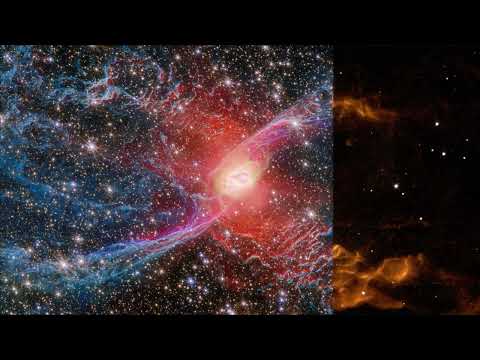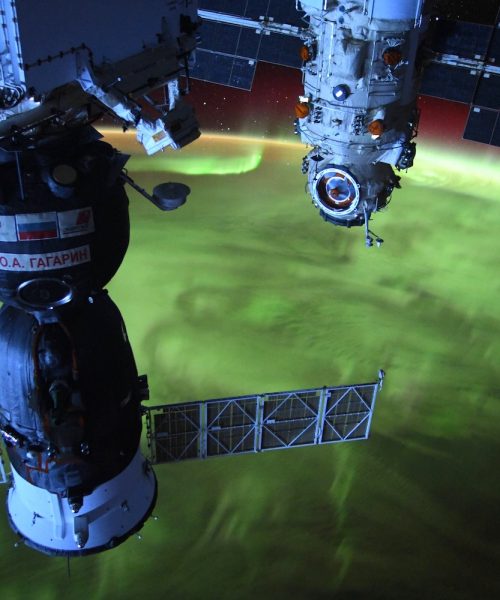In the almost three years since NASA proved that it could successfully deflect an asteroid, we’ve learned a lot about these space rocks. The September 2022 collision of a spacecraft into the asteroid moon Dimorphos completely changed the space rock’s orbit. However, this groundbreaking test also showed smashing into an asteroid can trigger a barrage of boulders. The resulting chunks of rock carried more than three times the momentum of the spacecraft that crashed into Dimorphos. The ejected boulders created forces in unexpected directions that could complicate other attempts to deflect an asteroid, according to a study published this month in the Planetary Science Journal.
“We succeeded in deflecting an asteroid, moving it from its orbit,” study co-author and University of Maryland astronomer Tony Farnham said in a statement. “Our research shows that while the direct impact of the DART spacecraft caused this change, the boulders ejected gave an additional kick that was almost as big. That additional factor changes the physics we need to consider when planning these types of missions.”
The team used images taken by LICIACube, a small Italian spacecraft that observed DART’s aftermath. They tracked 104 boulders ranging from 0.2 to 3.6 meters (about half a foot to 11 feet) in radius as they shot across space away from Dimorphos at speeds up to 52 meters per second (116 miles per hour). Using those images, the astronomers determined the three-dimensional locations and velocities of the ejected rocks.
“We saw that the boulders weren’t scattered randomly in space,” Farnham said. “Instead, they were clustered in two pretty distinct groups, with an absence of material elsewhere, which means that something unknown is at work here.”
[ Related: 5 ways we know DART crushed that asteroid (but not literally). ]
The largest debris cluster they studied contains about 70 percent of the objects measured in the study. It was ejected south of the asteroid at high velocities and shallow angles. The authors believe that these ejected boulders likely came from specific sources. One source could be the larger boulders on Dimorphos that were shattered by DART’s solar panels in the seconds before the main body of the car-sized spacecraft hit its surface.
“DART’s solar panels likely hit two big boulders, called Atabaque and Bodhran, on the asteroid,” added study co-author and astronomer Jessica Sunshine. “Evidence suggests that the southern cluster of ejected material is probably made up of fragments from Atabaque, a 3.3-meter-radius boulder.”
Sunshine served as deputy principal investigator for the NASA Deep Impact mission to probe the surface of Comet P/Tempel 1. She compared DART’s results with Deep Impact’s, noting that the surface features and target composition of the space rock fundamentally shape the impact outcomes.
“Deep Impact hit a surface that was essentially very small, uniform particles, so its ejecta was relatively smooth and continuous,” Sunshine explained. “And here, we see that DART hit a surface that was rocky and full of large boulders, resulting in chaotic and filamentary structures in its ejecta patterns. Comparing these two missions side-by-side gives us this insight into how different types of celestial bodies respond to impacts, which is crucial to ensuring that a planetary defense mission is successful.”
Additionally, the momentum from the DART impact’s ejected boulders was mostly perpendicular to the spacecraft’s trajectory. This indicates that it could have tilted Dimorphos’ orbital plane by up to one degree–potentially sending it tumbling into space. Understanding the effect that this boulder debris has will be key to the European Space Agency’s Hera mission, which will arrive at the Didymos-Dimorphos system in 2026.
“Data gathered from LICIACube provides additional perspectives on impact events, especially as DART was originally designed to solely rely on Earth-based observations,” Farnham said. “Hera will do the same by giving us another direct view of the impact’s aftermath, relying on the predictions we’ve made using data gathered from DART.”
Farnham notes that these perspectives and close-up images from LICIACube gave the DART team crucial information that would have been impossible to detect from Earth. This includes the data on the asteroid boulders themselves. This new study suggests the importance of considering all of these variables when planning future asteroid deflection missions.
“If an asteroid was tumbling toward us, and we knew we had to move it a specific amount to prevent it from hitting Earth, then all these subtleties become very, very important,” Sunshine added. “You can think of it as a cosmic pool game. We might miss the pocket if we don’t consider all the variables.”






